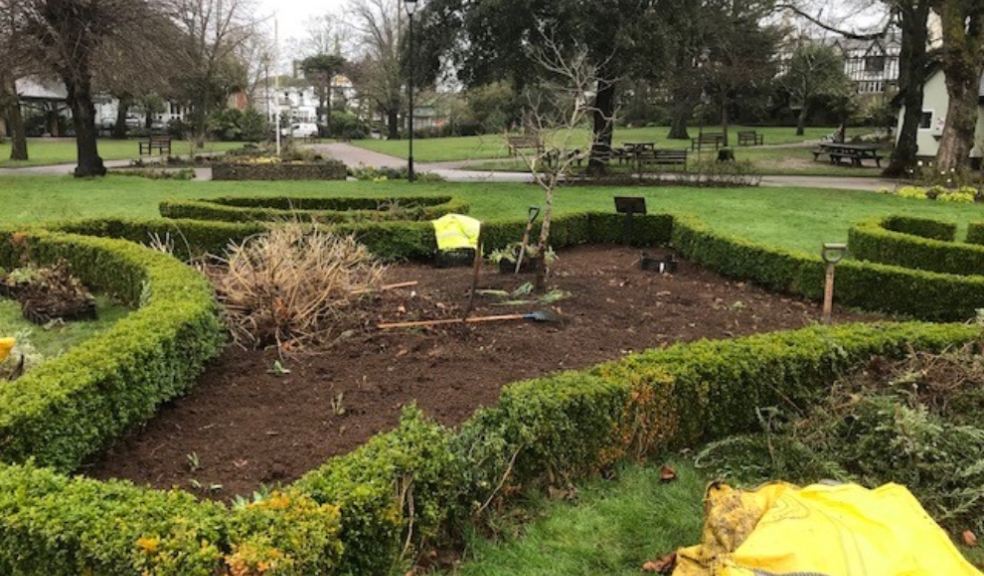
Exciting new perennial planting schemes revealed for East Devon open spaces
Exciting plans to transform East Devon’s open spaces into seas of colour, that bloom all year around, have begun.
Last year East Devon District Council (EDDC) made a move towards becoming more environmentally friendly, planting more perennials which return bigger and better each year in parks and green spaces.
EDDC has again careful laid out exciting plans for its green spaces in 2022. The planting has been designed specifically for each area to try and capture each spaces’ identity, through the use of colours, textures, structures and shapes.
The authority’s StreetScene team spent the first week of March tidying up all its open spaces and preparing them for even more new planting.
The planting schedule for the district is as follows:
· Week beginning 14 March – Planting in Manor Gardens, Beach Gardens and the war memorial in Exmouth
· Week beginning 21 March – Planting at Seafield Gardens in Seaton
· Week beginning 28 March – Planting at Connaught Gardens in Sidmouth
· Week beginning 4 April and onwards – Sowing flowers and plants in outstanding green spaces
Like last year, plans involve reducing the seasonal bedding displays, focusing on more permanent planting designs which help EDDC to take positive steps towards reducing its carbon footprint and using resources more sustainably, while increasing biodiversity.
EDDC is not alone in its approach, much of the horticultural industry is moving this way. You only have to look at the Chelsea Flower Show to see the interest and vibrancy being created through perennial planting schemes.
There are a number of reasons why EDDC has changed its approach, including:
• Permanent planting will help to create mini eco systems and habitat for bugs, bees and birds to flourish.
• Planting will be dynamic in colour and form, providing novel experiences for users throughout the year
• Planting will provide interest throughout autumn and winter months through flowers, foliage and architectural forms
• Plants will be selected to provide nectar, essential to our pollinators to thrive and survive. Think of it as cafés for bees and butterflies.
• Plants will be selected on their drought tolerance and suitability to the endemic environment but also their wonderful flowers, form, texture or scent.
• Planting can be divided and recycled in future seasons – less plastic pots and trays.
• Reduced cultivation of the beds allows earth worms and mycorrhizal fungi to flourish - big buddies of plant life.
Why EDDC is reducing its traditional bedding displays:
• Bedding plants are intensively produced and provide a monoculture environment which doesn’t allow wildlife to flourish.
• They don’t attract enough pollinators essential to biodiversity.
• They are single use and are thrown away at the end of their short life. There is a seismic shift to move way from single use products for good reason.
• They require intensive watering which is an unnecessary waste of natural resources.
• The constant digging over of the beds disturbs the natural soil culture.
Councillor Denise Bickley, EDDC’s assistant portfolio holder climate action and emergencies said:
“I am excited to see how the perennials planted last year look now that they are bedded in, and to see what our clever team have in mind for our parks and gardens across the area this year. It will also be very interesting to see how wildlife is reacting to the new regime and I have no doubt we will start to see an increase in pollinators, as more and more of us are gardening with the natural world in mind.”
An EDDC spokesperson said:
“Our mission is to provide more sustainable planting that gives year round interest and colour but lessens the impact on our planet. This action is a small but important part of our work to help meet our climate change action plan as part of signing up to the Devon Climate Emergency.
“We really hope everybody gets on board and supports a greener East Devon.
We understand this won’t be to everyone’s taste, however we have had a real buzz around this; on site whilst we have been planting out the interest from the public has been really high. Many people now seem to understand the need to think about sustainability, the way we look after our planet and the importance of providing habitat as well as year round interest in our beds, many of which were often bare in the autumn/winter months.”
Visit https://eastdevon.gov.uk/rewilding for more information.













